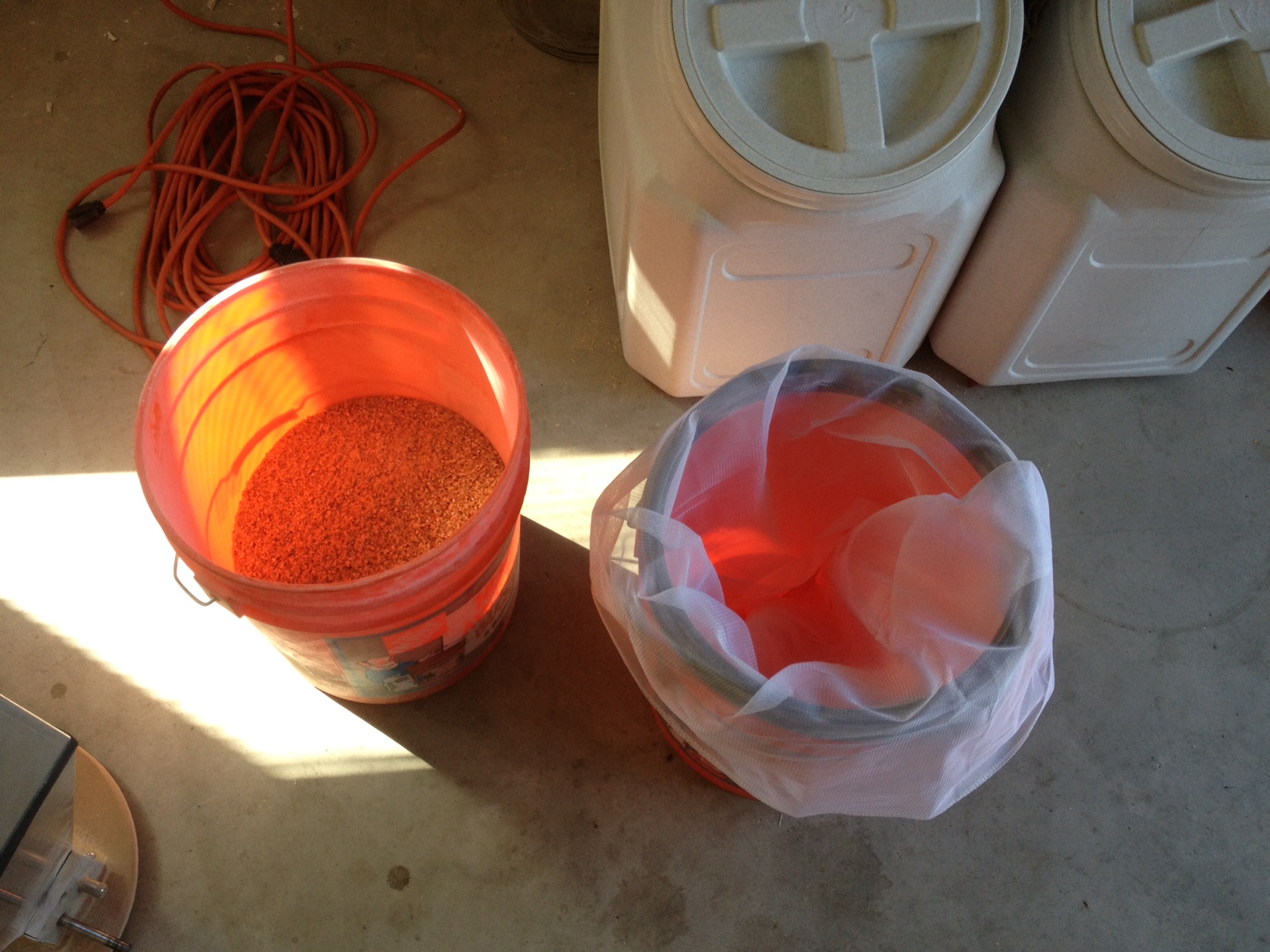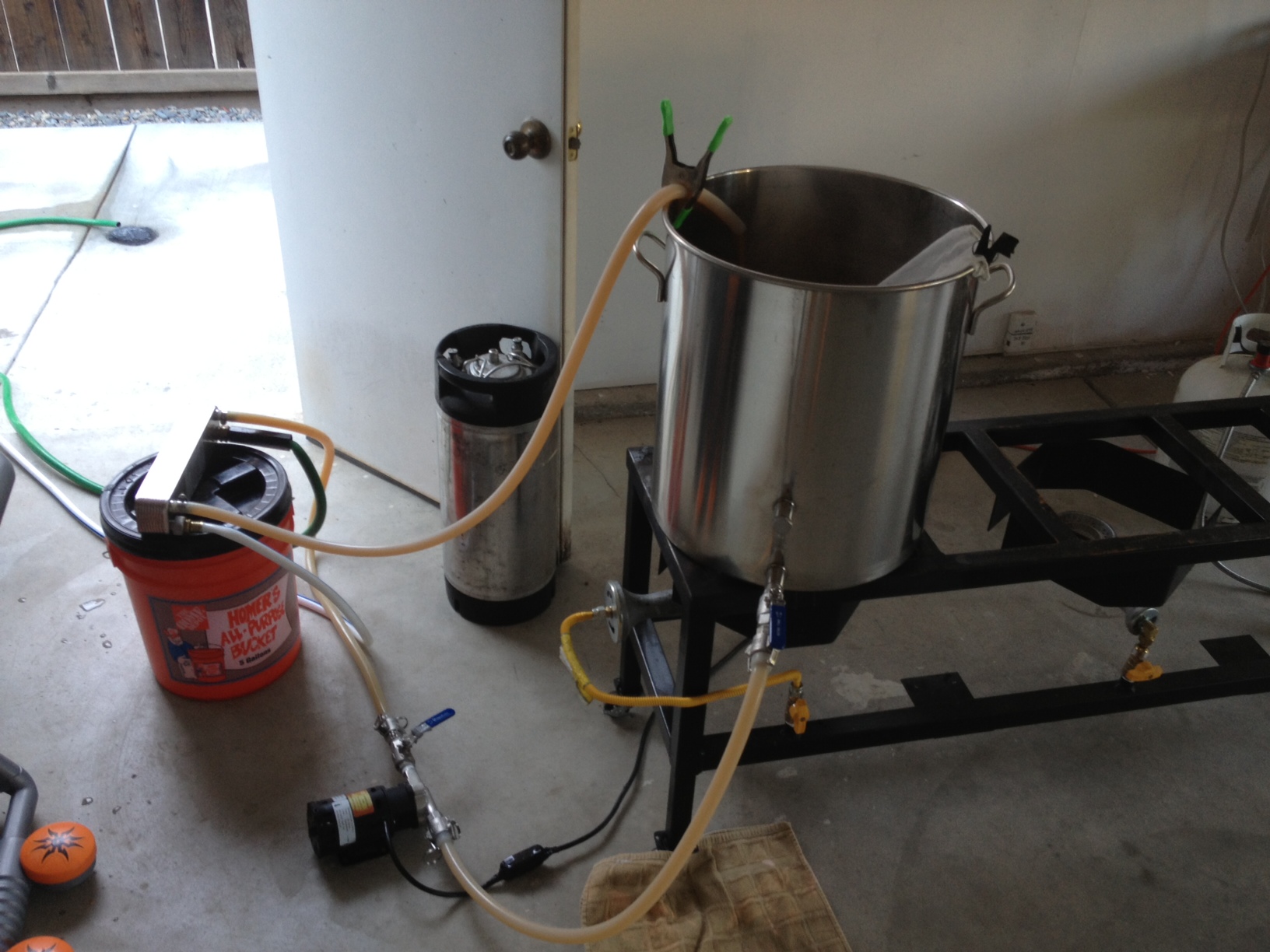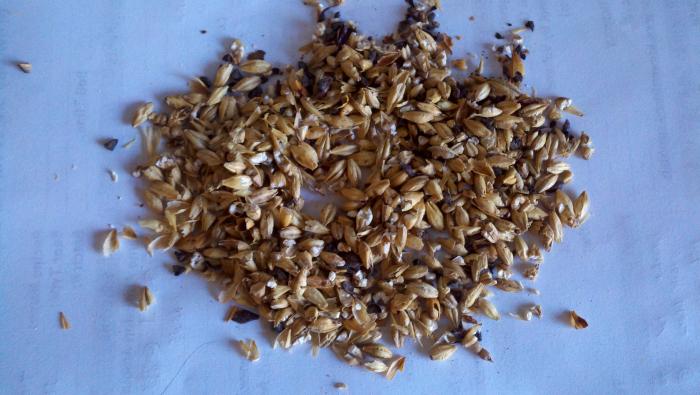Brulosopher
Well-Known Member
- Joined
- Jun 1, 2011
- Messages
- 3,007
- Reaction score
- 447
I usually brew 10 gallon batches every-other-week, mostly using the Batch Sparge method, though occasionally I fly sparge. My typical brew day is right around 6 hours from start to finish and my efficiency averages about 73%. I hadn't planned on brewing this weekend but realized my family had nothing planned, so I figured I'd have some fun trying a few things I'd been meaning to try for awhile: Brew In A Bag, low OG session beer using mostly Munich Light malt, pitching directly from washed and harvested yeast with no starter, and using 100% Perle hops. I'm calling the beer a mOktoberfest, and if all goes well, plan to take plenty to jeffd10's Oktoberfest party in a couple weeks. Here are the details...
As soon as I decided I wanted to brew, I designed the following low OG recipe using BeerSmith:
Brulosopher's mOktoberfest Recipe
Est OG: 1.040 (Actual was 1.035)
Est FG: 1.011
IBU: 23
SRM: 8
Est ABV: 3.8%
Grain
4.75 lbs Munich (10L)
2.50 lbs Pilsner (Canadian)
6.00 oz C60
Hops
14 g Perle @ 50 min
14 g Perle @ 20 min
15 g Perle @ 5 min
Yeast
WLP029 German Ale/Kolsch (harvested and washed, no starter)
EQUIPMENT
15 gallon kettle with ball valve (my boil kettle)
1 large (24" x 24") mesh grain bag
Chugger pump (not necessary)
Plate chiller (not necessary)
I've seen people use a pulley and other gizmos, but I wanted to keep this pretty simple. I only used the pump because I have it, it's certainly not necessary.
PROCESS
I changed my equipment setting in BeerSmith to BIAB and it said to gather the entire water volume into the kettle, essentially making this a "no sparge" brew day. I went with it and gathered just over 9 gallons of filtered water.

While my water was heating, I measured and milled my grains...

...then poured them into my grain bag.

Once my strike water had reached temp (162F for a 156-158F mash), I put the grain bag in the kettle and stirred well.

After about 5 minutes of stirring, my mash was to temp, so I poured myself a Tiny Bottom Pale Ale and relaxed for a bit.

After about 15 minutes I checked my temps and noticed it had dropped about 1 degree, so I laid a sleeping bag over the kettle to preserve as much heat as possible.

Then I had some of my Brulospher's Brown Ale.

Once the mash was complete, I turned my burner on to raise the temp of the wort to 168F for a mash out- this only took about 10 minutes.

I removed the grains and began my boil.

I recently bought these paint strainer bags to use for hops- a maiden voyage.

With about 15 minutes left in the boil, I connected my pump and plate chiller to get everything sanitized- no clogs, the paint strainer bags worked great!

Then I drank this, to stay humble...

While BeerSmith predicted over 80% efficiency, I got right around 65%, which is fine with me. My guess is this was at least partially due to the fact I didn't squeeze the grains or anything. Either way, I then pumped my chilled wort into the fermenter... yep, I still prefer plastic buckets.

Finally, I pitched my yeast and placed the fermenter in the regulated freezer... and again, yep, I always keep cheap beer on hand. Don't hate.

Here's to hoping for best! Also, I like this shot of my brewery at work:

Cheers!
As soon as I decided I wanted to brew, I designed the following low OG recipe using BeerSmith:
Brulosopher's mOktoberfest Recipe
Est OG: 1.040 (Actual was 1.035)
Est FG: 1.011
IBU: 23
SRM: 8
Est ABV: 3.8%
Grain
4.75 lbs Munich (10L)
2.50 lbs Pilsner (Canadian)
6.00 oz C60
Hops
14 g Perle @ 50 min
14 g Perle @ 20 min
15 g Perle @ 5 min
Yeast
WLP029 German Ale/Kolsch (harvested and washed, no starter)
EQUIPMENT
15 gallon kettle with ball valve (my boil kettle)
1 large (24" x 24") mesh grain bag
Chugger pump (not necessary)
Plate chiller (not necessary)
I've seen people use a pulley and other gizmos, but I wanted to keep this pretty simple. I only used the pump because I have it, it's certainly not necessary.
PROCESS
I changed my equipment setting in BeerSmith to BIAB and it said to gather the entire water volume into the kettle, essentially making this a "no sparge" brew day. I went with it and gathered just over 9 gallons of filtered water.

While my water was heating, I measured and milled my grains...

...then poured them into my grain bag.

Once my strike water had reached temp (162F for a 156-158F mash), I put the grain bag in the kettle and stirred well.

After about 5 minutes of stirring, my mash was to temp, so I poured myself a Tiny Bottom Pale Ale and relaxed for a bit.

After about 15 minutes I checked my temps and noticed it had dropped about 1 degree, so I laid a sleeping bag over the kettle to preserve as much heat as possible.

Then I had some of my Brulospher's Brown Ale.

Once the mash was complete, I turned my burner on to raise the temp of the wort to 168F for a mash out- this only took about 10 minutes.

I removed the grains and began my boil.

I recently bought these paint strainer bags to use for hops- a maiden voyage.

With about 15 minutes left in the boil, I connected my pump and plate chiller to get everything sanitized- no clogs, the paint strainer bags worked great!

Then I drank this, to stay humble...

While BeerSmith predicted over 80% efficiency, I got right around 65%, which is fine with me. My guess is this was at least partially due to the fact I didn't squeeze the grains or anything. Either way, I then pumped my chilled wort into the fermenter... yep, I still prefer plastic buckets.

Finally, I pitched my yeast and placed the fermenter in the regulated freezer... and again, yep, I always keep cheap beer on hand. Don't hate.

Here's to hoping for best! Also, I like this shot of my brewery at work:

Cheers!





